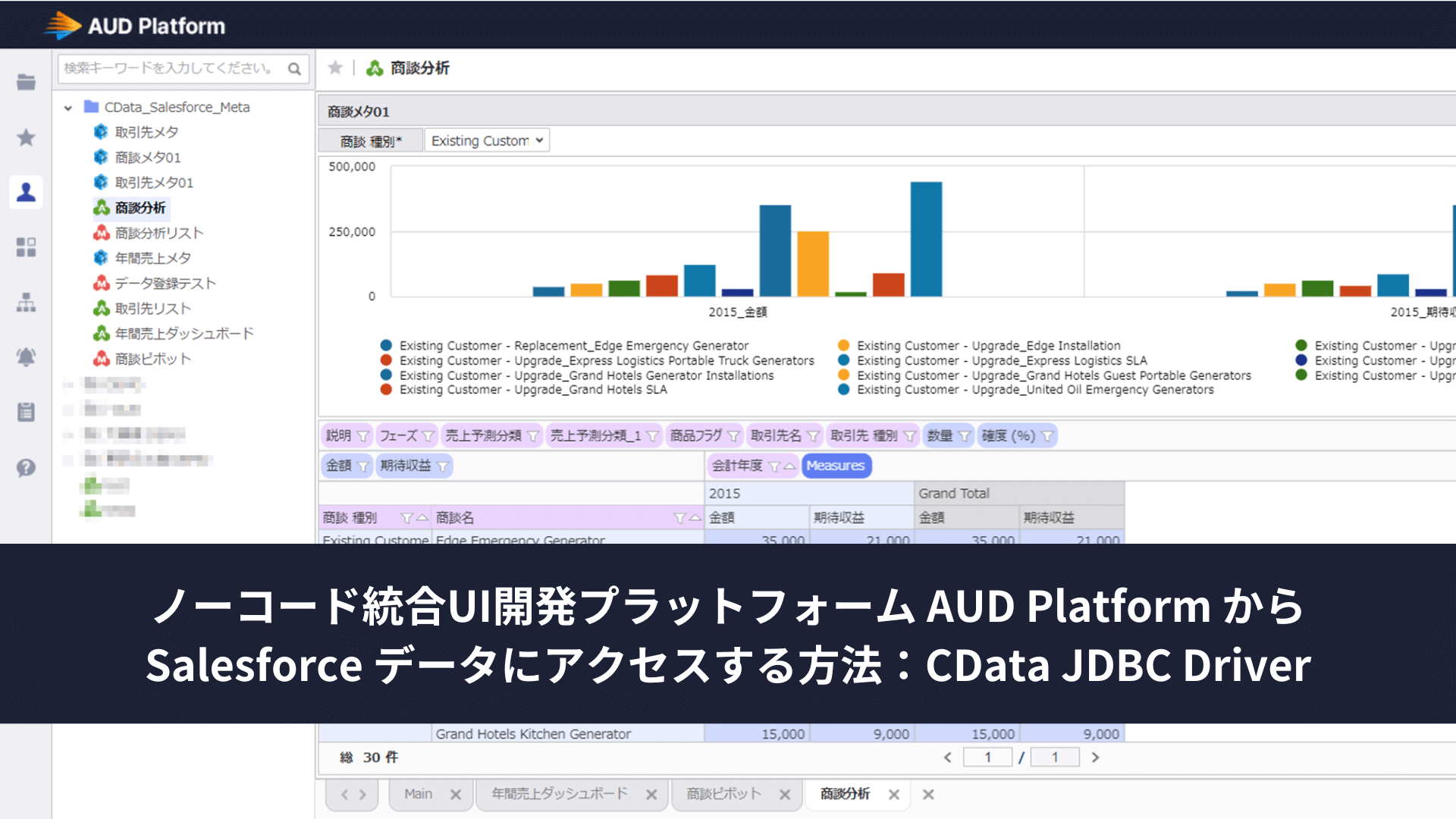ノーコードでクラウド上のデータとの連携を実現。
詳細はこちら →CData Software Japan - ナレッジベース
Latest Articles
- MySQL のデータをノーコードでREST API として公開する方法:CData API Server
- CData Sync AMI をAmazon Web Services(AWS)で起動
- Connect Cloud Guide: Derived Views, Saved Queries, and Custom Reports
- Connect Cloud Guide: SSO (Single Sign-On) and User-Defined Credentials
- Connect Cloud クイックスタート
- Shopify APIのバージョンアップに伴う弊社製品の対応について
Latest KB Entries
- DBAmp: Serial Number Expiration Date Shows 1999 or Expired
- CData Drivers のライセンスについて
- Spring4Shell に関する概要
- Update Required: HubSpot Connectivity
- CData Sync で差分更新を設定
- Apache Log4j2 Overview
ODBC Drivers
- [ article ] Magic xpi からCData Software ODBC Driver を使ってZendesk ...
- [ article ] Power BI をJDBC-ODBC Bridge ...
- [ article ] SAS JMP でのCData ODBC Driver for Azure Active ...
- [ article ] Exploratory でMarketo データを連携する方法
JDBC Drivers
- [ article ] Tableau CRM Analytics データをBoomi AtomSphere ...
- [ article ] Java のSAP Netweaver Gateway ...
- [ article ] DbVisualizer で Parquet データに連携しクエリを作成
- [ article ] Certinia データを帳票ツールbiz-Stream で連携利用する方法
SSIS Components
- [ article ] SSIS を使ってAccess データをSQL Server にインポート
- [ article ] SSIS を使ってBカート データをSQL Server にインポート
- [ article ] Workday をSSIS 経由でSQL サーバーにバックアップする
- [ article ] GraphQL データからSQL Server ...
ADO.NET Providers
- [ article ] Infragistics WPF XamDataGrid と Azure Analysis ...
- [ article ] Aqua Data Studio からAdobe Commerce データに連携
- [ article ] MySQL データを使ったCrystal Reports を発行
- [ article ] 複数Adobe Analytics アカウントをレプリケーション
Excel Add-Ins
- [ article ] Microsoft Power BI Designer でCData Software ODBC ...
- [ article ] SharePoint Excel Services からCData ODBC Driver for ...
- [ article ] SharePoint Excel Services からCData ODBC Driver for ...
- [ article ] Excel を使ってCockroachDB にデータを追加したり、CockroachDB ...
API Server
- [ article ] CData Sync AMI をAmazon Web Services(AWS)で起動
- [ article ] Excel からMicrosoft Query を使ってOData に接続する方法
- [ article ] Apache Solr のData Import Handler でOData ...
- [ article ] Java のOData データエンティティを使用したObject-Relational ...
Data Sync
- [ article ] Snowflake へのXero WorkflowMax データのETL/ELT ...
- [ article ] Microsoft Access へのeBay Analytics データのETL/ELT ...
- [ article ] Snowflake へのAvro データのETL/ELT パイプラインを作ってデータを統合する方法
- [ article ] Certinia データを複数のデータベースにレプリケーション。
Windows PowerShell
- [ article ] PowerShell からSAP HANA データに接続してデータの取得・更新・挿入・削除・CSV ...
- [ article ] Snapchat Ads データをPowerShell でMySQL にレプリケーションする方法
- [ article ] SingleStore データをPowerShell script でSQL Server ...
- [ article ] xBase データをPowerShell でMySQL にレプリケーションする方法
FireDAC Components
- [ article ] Delphi のMonday.com データへのデータバインドコントロール
- [ article ] Delphi のFacebook データへのデータバインドコントロール
- [ article ] Delphi のTrello データへのデータバインドコントロール
- [ article ] Delphi のBasecamp データへのデータバインドコントロール






